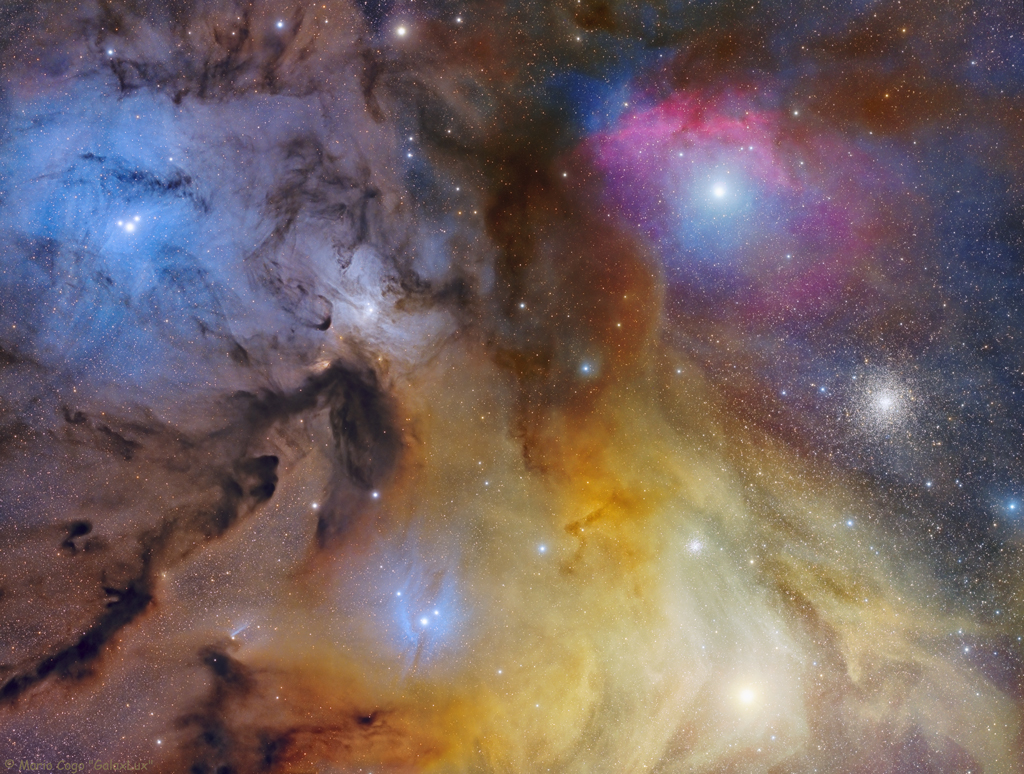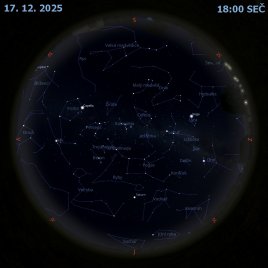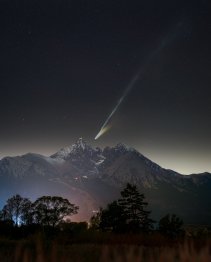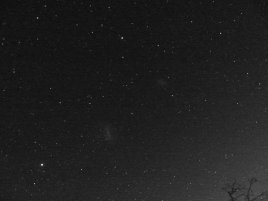Hvězdy, prach a plyn u Antaresu

Uznání a copyright: Mario Cogo (Galax Lux)
Proč je obloha v blízkosti Antaresu a Rho Ophiuchi tak zaprášená a přitom barevná? Barvy jsou výsledkem směsice objektů a procesů. Modré reflexní mlhoviny vznikají při osvětlování jemného prachu zepředu světlem hvězd. Načervenalé emisní mlhoviny zase vznikají při osvětlování plynných mračen ultrafialovým světlem hvězd, které jejich atomy excituje. Zezadu osvětlená oblaka prachu cloní světlo hvězd, a proto se jeví jako tmavá. Antares je rudý nadobr a jedna z nejjasnějších hvězd na noční obloze, která rozsvěcuje žlutočervená mračna na snímku vpravo dole. Hvězdný systém Rho Ophiuchi se nachází ve středu modré reflexní mlhoviny vlevo nahoře. Vpravo nahoře od Antaresu je vidět vzdálená kulová hvězdokupa M4. Tato hvězdná mračna jsou dokonce ještě barevnější, než mohou lidé vůbec vidět, jelikož emitují světlo přes celé elektromagnetické spektrum.
Seznam odkazů v popisu
- Wikipedia: Antares
- Wikipedia: Rho_Ophiuchi_cloud_complex
- APOD: Reflection Nebulae
- APOD: 2021-02-14 Růžicová mlhovina s dlouhou stopkou
- NASA: Ultraviolet Waves
- APOD: 2003-07-06 Fraktální mezihvězdný prach zblízka
- APOD: 2020-11-22 Tmavé molekulární mračno Barnard 68
- Illinois.edu: ANTARES (Alpha Scorpii)
- GSU.edu: Red Supergiants
- Wikipedia: List_of_brightest_stars#Table
- Galaxlux.com: Rho Ophiuchi Complex (Scorpius and Ophiuchus)
- Wikipedia: Rho_Ophiuchi
- Wikipedia: Reflection_nebula
- APOD: Globular Clusters
- APOD: 2000-05-23 M4: Nejližší známá kulová hvězdokupa
- NASA: Color Your Universe: Find the Hidden Objects
- APOD: 2019-08-18 Člověk jako kosmická loď
- NASA: Introduction to the Electromagnetic Spectrum
NASA Official: Phillip Newman Specific rights apply. NASA Web Privacy Policy and Important Notices
A service of: ASD at NASA / GSFC & Michigan Tech. U.
Odkaz na originální APOD


